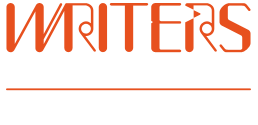
For writing groups interested in generating material at meetings, writing exercises and activities can be a very helpful starting place.
Taking time after every exercise to discuss what one liked, disliked or learned from each activity can also help attain a greater understanding of what avenues of creative expression excite you as a writer, and can provide motivation for continued work within the restrictions and forms that those writing exercises impose.
Download: Activities for writing groups (PDF)
Generating material
Generating new material in a writing group is a great way to move a project forward, or begin exploring new ideas in a non-judgemental and less outcome orientated space.
Auto-writing
Auto-writing forms the basis of a lot of writing exercises. It is an exercise that most writers would be familiar with, and is a practice focused on creativity without judgement.
It can be as simple as setting a timer for a certain amount of time (generally anywhere between 5 and 15 minutes) and keeping pen to paper for that whole time, writing anything that comes into your head (which could end up being ‘I don’t have anything to write and this exercise is silly’).
Encouraging yourself to keep writing, but not write frantically, is a great way to establish a non-judgemental practice, and to cleanse your brain of other things before beginning on other exercises.
As WV tutor Lucy Treloar puts it, the purpose of auto-writing is often not to show it to people, but just develop a regular practice that retrains your brain to think with writing: “The aim is to create changes in your neurological pathways, habituate yourself to a different way of writing by turning off the inner critic.”
Auto-writing from prompts
Prompts such as photographs, phrases, or lists of things to include (a prop, a location, a line of dialogue, a character) can offer a starting place for auto-writing, or provoke changes in direction during an auto-writing exercise. Don’t feel the need to be bound by the prompts presented, instead use them as a starting place to continue generating – if you are on a productive stream of thought you need not change that for the prompts being given.
Prompts can also come in the guise of a well-known form or structure. One that WV tutor Max Barry advocates is writing yourself a letter. Another advocated for by Lucy Treloar, based on a practice by David Milch, is writing a dialogue between two characters for 20-50 minutes. Both of these practices advocate coming fresh to the page with a blank mind and no predetermined ideas.
Experimenting with form
A non-linear approach to one’s writing that encourages experimentation with forms outside your comfort zone can provide you with a new perspective on your own writing practice. Finding ways to take yourself out of your normal writing practice and experiment with new forms is extraordinarily useful. Here are a few experiments you can try with your writer’s groups.
Reading work aloud
Exercises aside, reading work aloud is generally a great idea, as it allows a writer to see how their work flows and whether it makes sense.
But having someone in your writers group read your work aloud also provides you with an opportunity to hear your own work interpreted by another, providing a lot of information about other possible meanings your work can motivate.
Creating within restrictions
For groups working on longer manuscripts, experimenting with forms that have various restrictions can be a useful way to view your regular writing practice from the perspective of another.
Some restricted forms to try out might be flash fiction (stories in as few words as possible), writing sonnets (poems with very specific writing and content structures), or exploring haiku (a Japanese form restricted to seventeen syllables – creating many can form interesting collections of snapshots).
Well known forms work well also as a prompt, but provide interesting restrictions to what one will make as well – such as re-writing a piece you have already created as a fable, a children’s story, a song, or a letter.
Restrictions do not have to be about a chosen structure either – it could be as simple as containing what you are generating to one page, containing oneself to five words per line on a page, or restricting the phrasing of sentences. Placing the boundaries of a form or exercise on your writing often encourages innovative avenues of artistic expression.
Alternate forms of presentation
A writing practice is often primarily focused on one’s work being read. But what if we change the way our words and our narratives are presented? An easy exercise for a Writers Group that uses words and craft – provide every writer a number of cue cards and encourage each writer to reinterpret a piece of auto-writing as a visual text, utilising the cue cards, coloured pencils and pens, and a space in the room. Create in five minutes an exhibition of your words that evoke the narrative or feeling of that which you have written.
Resources
This is not an exhaustive list – just a starting place.
The Writers Victoria website has some great resources to explore when it comes to writing exercises, some of which have already been included here. Check out our Writing Workouts and Writing Tips and Tools, which go into more detail on generating material, structuring your work, and more.
Credits
This resource was developed by Josiah Ludlum as part of a Writers Victoria internship.
